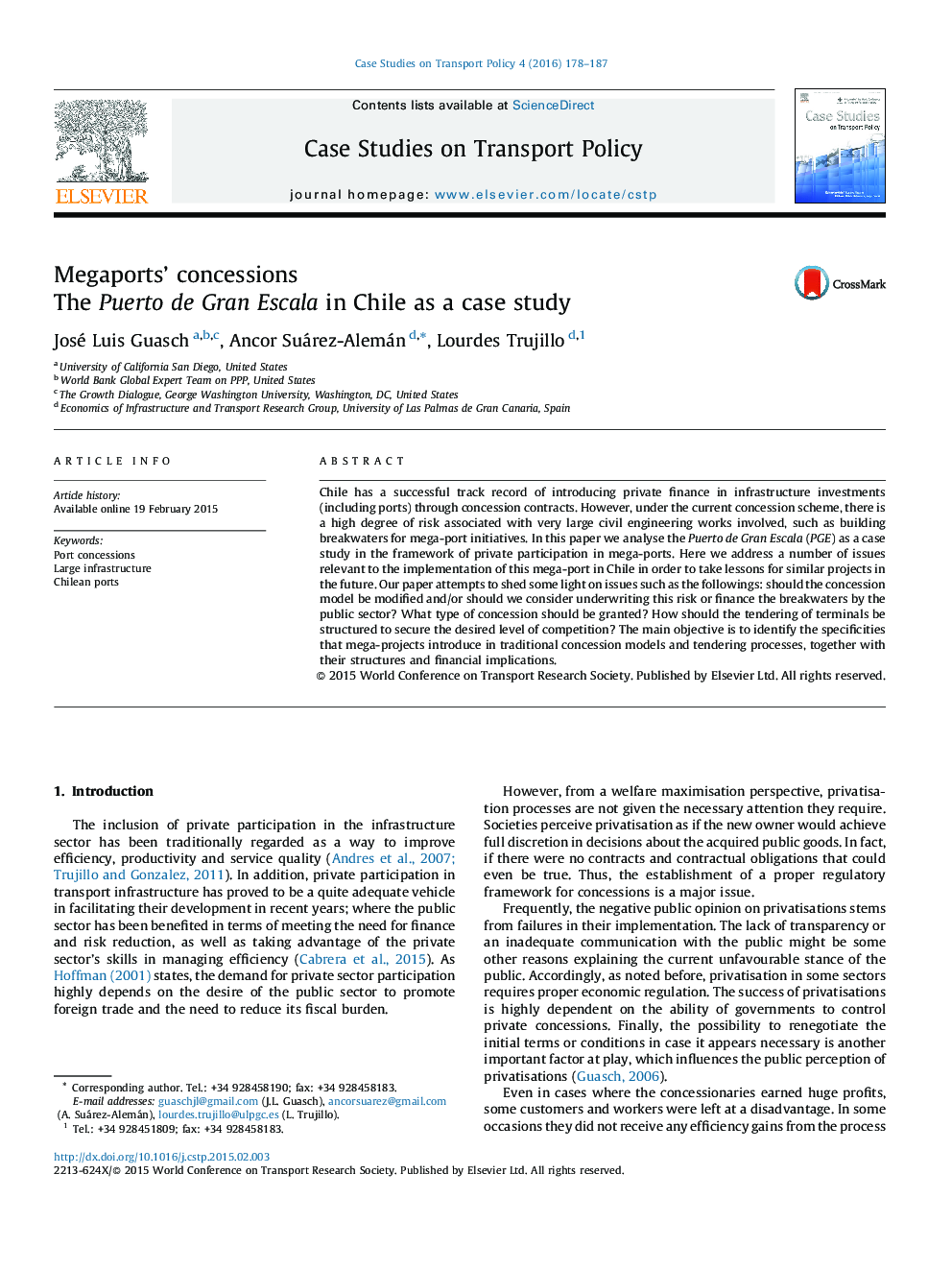| Article ID | Journal | Published Year | Pages | File Type |
|---|---|---|---|---|
| 250635 | Case Studies on Transport Policy | 2016 | 10 Pages |
•The specificities that mega-projects introduce in concession models are identified.•Very large civil engineering works could prove extremely risky under current schemes.•Some competition concerns need to be particularly addressed in these infrastructures.•It is desirable to separate the breakwater construction from the terminals.•The government should take upon itself to deliver the breakwater component.
Chile has a successful track record of introducing private finance in infrastructure investments (including ports) through concession contracts. However, under the current concession scheme, there is a high degree of risk associated with very large civil engineering works involved, such as building breakwaters for mega-port initiatives. In this paper we analyse the Puerto de Gran Escala (PGE) as a case study in the framework of private participation in mega-ports. Here we address a number of issues relevant to the implementation of this mega-port in Chile in order to take lessons for similar projects in the future. Our paper attempts to shed some light on issues such as the followings: should the concession model be modified and/or should we consider underwriting this risk or finance the breakwaters by the public sector? What type of concession should be granted? How should the tendering of terminals be structured to secure the desired level of competition? The main objective is to identify the specificities that mega-projects introduce in traditional concession models and tendering processes, together with their structures and financial implications.
